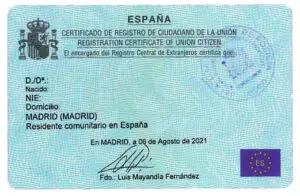
ETIAS Calculator: Enjoy Your 90 Days worry free with our intuitive Tool
If you are travelling to the ETIAS Area with an ETIAS authorisation, use our ETIAS calculator to ensure you remain within the 90/180 day rule. This calculator is the most straightforward tool you will find to help understand and comply with the rules.
*ETIAS implementation has been delayed and is currently expected in 2025. Until then, people from countries that will require ETIAS do not require anything for visits of up to 90 days.
On this Page
How to Use the ETIAS Calculator
Put in all the dates you entered and exited the ETIAS area, from the past, present or future, in chronological order. For ongoing trips, don’t forget to include all your trips from the past 180 days and your current trip. The ETIAS calculator will identify if you go over your 90 day limit at any time. The allowance used and days remaining results will always take into account the 180 day rolling period you are in.
ETIAS Calculator
The 90/180 rule explained
If you have an ETIAS authorisation, this means you may only spend up to 90 days in the ETIAS area within any 180 day period. After this, you must leave the entire ETIAS area.
The 180 day period is a ‘rolling period’. This means it moves! Think of it like a 180 day shadow that you cast behind you (i.e. 180 days backwards) as you move forward in time. As you move forward, your shadow moves forward too, but it is always 180 days long.
Let’s take an example. Imagine the year is 2026. You spend 30 days in the ETIAS countries in January, then you go outside the ETIAS area, and then you come back to spend another 30 days in the ETIAS area in April. At the end of April, you have spent 60 days of your 90 day allowance in the ETIAS area (30 from January + 30 from April).
Now let’s imagine you leave the area again, and you come back in August to spend another 30 days in the area. At the end of August, you will still have only spent 60 days of your allowance in the area (30 days from April plus 30 days from August). Why? Because at the end of August, when you look at the 180 day ‘shadow’ behind you, it is still covering April, so April is included. But it has moved ‘forward’ on the calendar, and no longer covers January, so those 30 days are no longer included!
New rolling periods work in a similar way. Continuing with the previous example, let’s imagine you leave at the end of August 2026, and you come back again in May 2027. When you arrive in May, you will have your full 90 days available again, and your allowances will be reset. Why? Because when you look behind you, none of your previous trips fall within the 180 days before this new trip.
Countries that require ETIAS to visit them
Stays of more than 90 days
For stays of more than 90 days in Spain, you must do the following:
- Citizens of countries that require ETIAS or a Schengen visa to visit Spain: You must apply for the appropriate residence visa. Once you have this, you must also apply for a NIE and TIE. Find out more about residence visas here. Find out more about the TIE and other associated requirements here.
- Citizens of countries that do not require ETIAS or a Schengen visa to visit Spain (EFTA countries). You must apply for a certificado de registro and NIE. Find out more about these and other associated requirements here.
Travel /Health Insurance
If you are from a country that requires a Schengen Visa to visit Spain, then you also require mandatory health insurance covering your visit. Click here for recommended providers.
If you are from a country that requires an ETIAS authorisation to visit Spain, then health insurance is not mandatory, but it is recommended. Click here for recommended providers.
If you are from a country that does not require a Schengen visa or an ETIAS authorisation to visit Spain (EFTA countries), then you do not require health insurance.
More articles that may be of interest:
Residency in Spain for EU citizens: our easy to follow guide
Residency in Spain for EU Citizens If you are an EU or EFTA citizen, you
Move to Spain -practical information to help make your move to beautiful Spain easy
Move to Spain If you’re thinking about a move to Spain, there’s quite a lot
Visiting Spain – all the information you need for an easy stay in this beautiful country
Visiting Spain Use this page to guide you to the information you need On this
EES Spain: Our easy to follow guide
EES Spain If you are wondering what the EES system is and how it will

How to get the green NIE (Certificado de Registro) An easy to follow guide
Get your ‘Green NIE’ (Certificado de Registro) The Certificado de Registro de Ciudadano de la
How to Get a Certificado Digital: An easy to follow guide to getting this essential tool
How to get a Certificado Digital If you want to save huge amounts of time
If you found this page useful, please consider sharing it:

